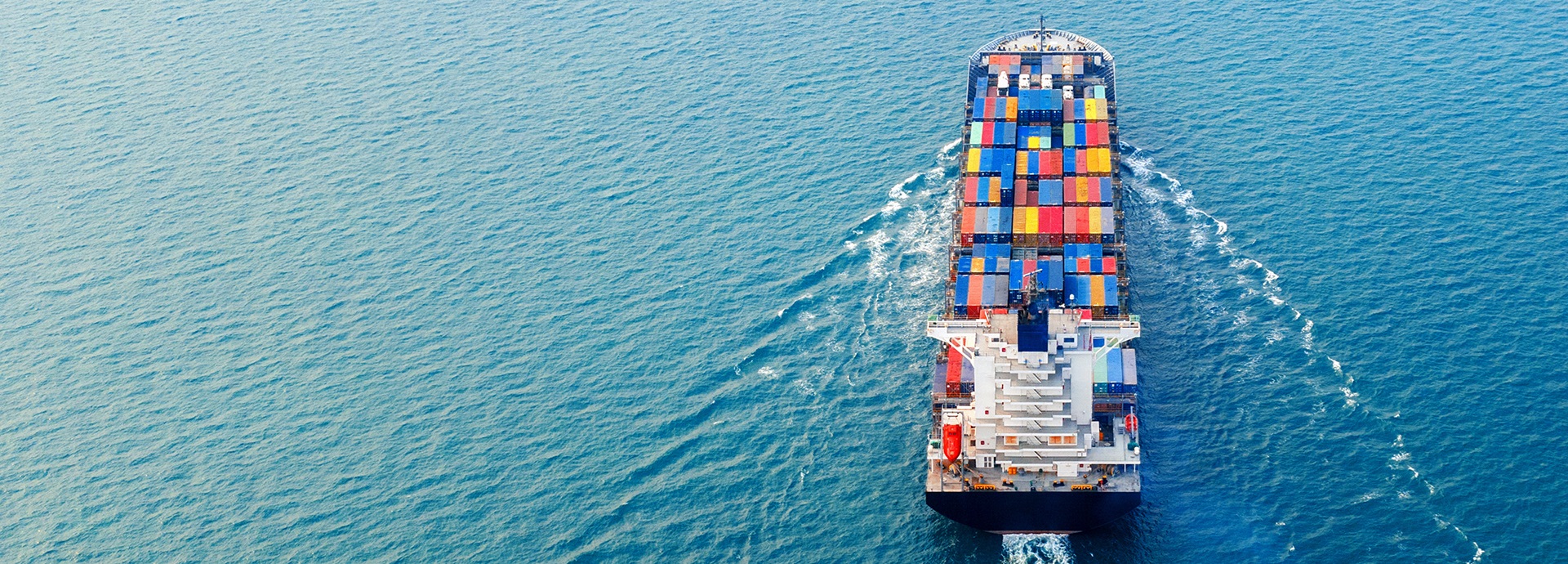

If you’re operating a container ship that’s more than five years old, it was probably designed for an operating profile that is now out of date. Its 2-stroke engine is likely optimised for much higher speeds than today’s market demands. It’s like owning a gas-guzzling sports car in a city where the maximum speed limit is 30 km/h – not the most efficient mode of transport. So what are your options?
Container ships built before the era of emission-limiting regulations were typically designed for sailing speeds of up to 30 knots. Today, operators need to abide by regulations like the energy efficiency existing ship index (EEXI) and carbon intensity indicator (CII).
This means speeds of around 18 knots have become the norm – about two thirds of the speed for which the engines were optimised. The result is that engines are running very inefficiently at low load, consuming far more fuel and producing much more CO2 than they need to.
In 2022 Wärtsilä performed an analysis of the global fleet that predicted that more than one third of container ships would be non-compliant in 2023 if no action taken.
Furthermore by 2030, if no action is taken, 80% of container ships will be in the lowest CII category. Container ship owners have five main options when faced with this problem:
- Recycle the vessel
- Slow down even more
- Use drop-in biofuels
- Install energy saving technologies
- Retrofit the engine to optimise efficiency.
1 – Recycle the vessel
If your vessel is coming towards the end of its life, the payback time for any investment needed to keep it compliant may be too long. Shipping association BIMCO estimates that shipowners will scrap twice as many ships over the next 10 years compared to the previous decade due to tighter emission control.
In any other case, scrapping should be the last resort. In addition to the financial and environmental costs of this process, you also need to bear in mind the considerable cost of replacing the vessel.
Slots at shipyards fill up fast, and the longer you can keep the CO2 footprint that comes with recycling or building a ship off your company’s books the better your sustainability figures will look.
2 – Slow down even more
Slowing down your ship reduces fuel consumption and emissions but at the price of competitiveness. When you slow down below market speeds you enter a downward spiral: slower speeds equals fewer ports visited per year, which leads to less cargo transported and results in less profit.
As regulations tighten even further, speeds will have to drop even more. Depending on market demand, you might need more ships to do the same amount of work – and before long your business simply won’t be able to compete.
And even though sailing slower reduces fuel consumption, it leaves you with an even more inefficient engine because it is operating even further away from the speed for which it was optimised.
3 – Use drop-in biofuels
Biofuels are an interesting alternative for the container shipping segment because of their potential as a carbon-neutral energy source. Biofuels are largely compatible with existing fuel supply and storage technologies, making them a simple, low-cost decarbonisation option. Drop-in blends of up to 30% biofuel are allowed under the IMO NOx regulations without requiring any additional emission measurements.
Biofuels can be made from things like vegetable oils, animal waste, crop residues, sewage from wastewater treatment and food waste from industry and households. They come in both liquid and gaseous forms. The three biofuels that are considered most relevant for shipping are hydrotreated vegetable oil (HVO), fatty acid methyl ester (FAME) and bioLNG.
All three of these options can be used as drop-in fuels without modifying existing engine, fuel supply or storage technologies. However, due the higher price of biofuels, engine efficiency still needs to be addressed.
4 – Install energy saving technologies
Energy saving technologies (ESTs) such as rotor sails or efficiency-boosting add-ons like propeller and rudder retrofits are the low-hanging fruit when it comes to reducing the amount of energy it takes to push your ship through the water.
They are relatively inexpensive, quick to install and proven to cut fuel consumption and emissions. The trick to ensuring compliance and maximising fuel savings is to find exactly the right combination for your vessel and its current operating profile before moving to (more expensive) alternative fuels in the future.
So, ESTs are a no-brainer, but you’ve still done nothing that improves the efficiency of the beating heart of your ship – its engine. You can polish the sports car and take the wing mirrors off – that will help cut the amount of energy needed to move it forward – but look under the hood and that big, thirsty V8 is still growling at you.
Handpicked related content
Download this white paper to learn more about ESTs: “How to ensure a good CII rating while staying competitive – a quick guide to energy saving technologies”
5 – Retrofit your engine to optimise efficiency
The more efficient the engine is, the more value all the other measures you take will create. Adding a range of ESTs to a vessel with an engine running at low load is not as effective as adding them to a vessel with an engine running at the load it has been designed for.
What you need is a way to derate the engine to bring it into line with today’s operational reality. This way, you get to keep everything that’s great about the sports car – even its power – but its engine is now optimised for those 30 km/h city streets instead of the highway.
You can cut fuel consumption by around 3–4% with fuel-efficiency boosting upgrades that modify your engine’s fuel injection system and optimise engine parameters. But with radical derating you can go even further and get a leaner, healthier and better optimised engine that can be 10–15% more fuel efficient. This is particularly beneficial if you are considering switching to more expensive alternative fuels or a carrying out a fuel conversion for your vessel.
Radical derating involves reducing the engine bore size. Wärtsilä’s Fit4Power solution reduces the bore size by 25% while significantly improving combustion efficiency. It also includes a new combustion chamber design that enables the engine to run at optimal loads. This cuts both fuel consumption and greenhouse gas emissions.
Sounds like a long time out of the water, you might think. What about all that lost business? In fact, radically derating your ship’s engine like this can take just 30 days with no dry dock needed.
Essentially you get a brand-new engine with its maintenance clock is reset to zero and lower lifecycle costs. As an added bonus Wärtsilä Fit4Power is the only derating solution that prepares the engine for future fuel conversions, because extra installation positions for alternative fuel injectors are reserved on the cylinder cover.
Keep your container ship compliant and profitable for longer
If your container ship is coming up for its 15-year major overhaul it will have to be drydocked and have key engine components like pistons, valves, cylinders and liners replaced anyway. Radically derating your engine at the same time means no additional off hire but results in a vessel that will benefit more from energy saving technologies and that is ready to use future fuels as efficiently as possible. Most importantly, you will also have a vessel that will be compliant and profitable for longer.
Your easy next step
If you are wondering about the options, Wärtsilä can help you.

To organise a high-level assessment of your fleet and to discuss how we can help you meet your CII goals contact stam.achillas@wartsila.com.
Related solutions
Did you like this? Subscribe to Insights updates!
Once every six weeks, you will get the top picks – the latest and the greatest pieces – from this Insights channel by email.



